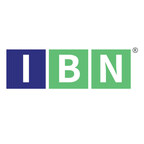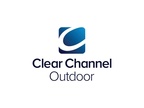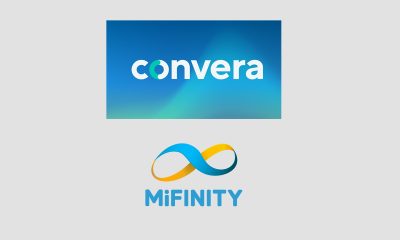Fintech PR
PROG Holdings Reports Fourth Quarter 2020 Results

- Revenues of $605.7 million, up 6.5%
- Diluted EPS of $0.62; Non-GAAP Diluted EPS $0.95, up 46.2%
- Earnings before taxes of $66.3 million; Adjusted EBITDA of $90.0 million, up 35.9%
- Progressive Leasing earnings before taxes of $88.1 million; Adjusted EBITDA of $96.7 million, up 25.4%
- Board of Directors authorizes new $300 million share repurchase program
PROG Holdings, Inc. (NYSE:PRG), a FinTech holding company operating Progressive Leasing, a leading provider of virtual in store, e-commerce and app-based point-of-sale lease-to-own solutions, and Vive Financial, an omni-channel provider of second-look revolving credit products, today announced fourth quarter 2020 results for the first time as a stand-alone public company.
“Our Progressive Leasing segment delivered record revenue, earnings before taxes, and adjusted EBITDA for the fourth quarter period, in spite of challenges posed by the pandemic”, said Steve Michaels, PROG’s Chief Executive Officer. “During our first quarter as a stand-alone FinTech company, the PROG team provided exceptional service to our customers and point-of-sale retail partners while also completing the spin-off of our former Aaron’s Business segment. We continued to navigate challenging economic conditions, as changes in customer behavior, supply chain disruptions, and broader economic uncertainty negatively impacted gross merchandise volume (GMV) in the period. During 2021, we expect to achieve strong GMV growth by expanding our e-commerce business and driving increased sales for our existing and new point-of-sale retail partners.”
Consolidated Results
For the fourth quarter of 2020, consolidated revenues were $605.7 million, an increase of 6.5% from the fourth quarter of 2019. The increase was primarily driven by continued strong customer payment performance across both the Progressive Leasing and Vive business segments, as well as elevated buyout activity in the period. These revenue drivers were partially offset by lower levels of GMV growth in the second and third quarters that had an unfavorable impact on fourth quarter revenue growth. Progressive Leasing’s GMV for the fourth quarter of 2020 declined 3.4% compared to the prior year period, as strong growth in new national retailers and e-commerce was offset by the effects of pandemic-related challenges experienced by our point-of-sale retail partners.
The provision for lease merchandise write-offs was 4.5% of revenues in the fourth quarter of 2020 compared with 6.6% in the same period of 2019, below our annual target range of 6% to 8% of revenues. The lower write-offs resulted from lower delinquencies and customer payment performance exceeding prior year results.
The Company reported net earnings from continuing operations for the fourth quarter of 2020 of $42.3 million compared to a net loss from continuing operations of $138.1 million in the prior year period (which was burdened by one-time legal and regulatory expenses of $179.3 million). Net earnings in the fourth quarter of 2020 included $15.5 million of transaction expenses related to the spin-off of our former Aaron’s Business segment, as well as $3.6 million of unallocated overhead costs that was previously allocated to that segment.
Adjusted EBITDA for the Company was $90.0 million for the fourth quarter of 2020, compared with $66.2 million for the same period in 2019, an increase of $23.8 million, or 35.9%. As a percentage of revenues, adjusted EBITDA was 14.9% in the fourth quarter of 2020 compared with 11.6% for the same period in 2019.
Diluted earnings per share from continuing operations for the fourth quarter of 2020 were $0.62 compared with diluted loss per share of $2.06 in the year ago period. The fourth quarter 2019 diluted loss per share was impacted by one-time legal and regulatory expenses of $179.3 million. On a non-GAAP basis, diluted earnings per share from continuing operations were $0.95 in the fourth quarter of 2020 compared with $0.65 for the same quarter in 2019, an increase of $0.30 or 46.2%.
Liquidity and Capital Allocation
The Company ended 2020 with a net debt position of $13 million and had $300 million of unused capacity on its $350 million revolving credit facility. In addition, the Company’s Board of Directors has authorized a new $300 million share repurchase program and determined to discontinue paying dividends for the foreseeable future.
“The Board’s decision to authorize a new repurchase program and discontinue the dividend, reflects our new positioning. With the spin-off behind us, our business is now high-growth and asset light. We have substantial capital to grow, through both re-investment in our business and potential opportunities to acquire innovative and scalable technologies or businesses. At the same time, we expect our strong cash flows will provide us the opportunity to return excess capital to shareholders through opportunistic buybacks,” said Mr. Michaels.
The Company expects to repurchase shares under its new $300 million program from time to time, subject to its capital plan, market conditions and other factors. The timing and exact amount of repurchases under the new repurchase program will be determined by the Company’s management. The Company is not obligated to acquire any particular number of shares and the new program may be suspended or discontinued at any time.
2021 Outlook
The Company is providing outlook for the first quarter of 2021, but will not be providing annual guidance at this time, as the economic uncertainty created by the pandemic, and uncertainty regarding the amount, nature and timing of any government stimulus, continues to impact our POS partners and our customers in a manner that limits its visibility into its full-year performance for 2021.
|
Q1 2021 Outlook |
||||||
|
(In thousands, except per share amounts) |
Low |
High |
||||
|
PROG Holdings – Total Revenues |
$ |
650,000 |
$ |
670,000 |
||
|
PROG Holdings – Net Earnings |
55,000 |
58,000 |
||||
|
PROG Holdings – Adjusted EBITDA1 |
85,000 |
90,000 |
||||
|
PROG Holdings – Diluted EPS |
0.81 |
0.87 |
||||
|
PROG Holdings – Diluted Non-GAAP EPS |
0.89 |
0.95 |
||||
|
Progressive Leasing – Total Revenues |
638,000 |
657,000 |
||||
|
Progressive Leasing – Earnings before taxes |
72,000 |
75,000 |
||||
|
Progressive Leasing – Adjusted EBITDA1 |
84,000 |
87,000 |
||||
|
Vive – Total Revenues |
12,000 |
13,000 |
||||
|
Vive – Earnings before taxes |
1,000 |
3,000 |
||||
|
Vive – Adjusted EBITDA1 |
1,000 |
3,000 |
||||
|
1 |
The Q1 2021 Adjusted EBITDA outlook excludes stock-based compensation expense. See GAAP to Non-GAAP reconciliation below for further details. |
Conference Call and Webcast
The Company will hold a conference call to discuss its quarterly results on Thursday, February 25, 2021 at 8:30 a.m. Eastern Time. The public is invited to listen to the conference call by webcast accessible through the Company’s investor relations website, investor.progleasing.com. The webcast will be archived for playback at that same site.
Fintech PR
Rule 10b-5 Private Securities-Fraud Litigation Peaked in 4Q’24

BETHESDA, Md., Jan. 10, 2025 /PRNewswire/ — SAR, a data analytics company specialized in the securities litigation risk of U.S. public companies, today published the Securities Class Action Rule 10b-5 Exposure Report for 4Q 2024. According to the report, securities litigation exposure of public company defendants that trade in the NYSE and NASDAQ peaked during the fourth quarter of 2024, when records were set across the buoyant U.S. equity markets. During the bullish market conditions of 2024, shareholders claimed approx. $665.2 billion in market capitalization losses due to alleged violations of Rule 10b-5 – the most in the last five years.
According to the report, global quarterly Rule 10b-5 securities litigation exposure in 2024 was 17% greater than the average of 2023. Actual monetary settlements with investor plaintiffs last year were, on average, 23% greater than during the last six years.
SAR data and analysis indicate that the litigation exposure of U.S. public company defendants amounts to approximately $380.3 billion in 2H 2024. Shareholders claimed approximately $4.0 billion in market capitalization losses per securities class action filing, and approximately $2.0 billion per allegedly fraud-related stock drop in 2H 2024. The former metric increased by 32.1%, and the latter by 15.4% during the second half of 2024.
“Our data and analyses indicate that securities litigation exposure against U.S. public companies peaked in the fourth quarter of last year. This peak may be short-lived with an expected increase in volatility and new headwinds for U.S. equities given greater shareholder scrutiny of corporate disclosures. With average Rule 10b-5 settlements over 20% greater in 2024 than during the last six years, litigation activity is expected to increase in 2025,” said Anthony Kabanek, EVP of SAR.
According to the report, in 2023 and 2024 investor plaintiffs claimed $13.6 billion and $20.5 billion, respectively, in private Rule 10b-5 securities-fraud class actions that relied on short-seller research.
Key takeaways:
- 86 U.S. issuers were sued for alleged violations of Rule 10b-5 during 2H 2024. Based on allegations presented in the first-filed class action complaint against each defendant issuer, U.S. SCA Rule 10b-5 Exposure amounts to $259.4 billion. U.S. SCA Rule 10b-5 Exposure decreased -5.4% relative to 1H 2024.
- U.S. SCA Rule 10b-5 Exposure peaked in the 2nd and 3rd quarters, followed by a decline to trend in the 4th quarter of 2024.
- 9 Non-U.S. issuers were sued for alleged violations of Rule 10b-5 during 2H 2024. Based on allegations presented in the first-filed class action complaint against each defendant issuer, ADR SCA Rule 10b-5 Exposure amounts to $120.9 billion. ADR SCA Rule 10b-5 Exposure increased by 11.3x relative to 1H 2024.
- An anomalously high 4th quarter exposure among Non-U.S. issuers contributed to a remarkably volatile year for ADR SCA Rule 10b-5 Exposure.
- Rule 10b-5 private securities-fraud filing frequency and potential loss severity need not move in tandem. Global exposure increased by approximately 34% in the 2H 2024 relative to 1H 2024, while filing frequency remained relatively stable.
- 38 U.S. Large Caps were sued for alleged violations of Rule 10b-5 in 2H 2024, the same observed frequency as 1H 2024. The U.S. Large Cap SCA Rule 10b-5 Exposure amounts to $233.7 billion, a decrease of 10.1% relative to 1H 2024.
- 22 U.S. Mid Caps were sued for alleged violations of Rule 10b-5 In 2H 2024. The U.S. Mid Cap SCA Rule 10b-5 Exposure amounts to $19.8 billion, more than 3 times the amount in 1H 2024.
- 26 U.S. Small Caps were sued for alleged violations of Rule 10b-5. The U.S. Small Cap SCA Rule 10b-5 Exposure amounts to $5.9 billion, a decrease of 33% relative to 1H 2024.
- 9 Non-U.S. issuers that trade via ADRs in the U.S. public markets were sued for alleged violations of Rule 10b-5. The ADR SCA Rule 10b-5 Exposure increased by over 11.3x to ~$121 billion, relative to 1H 2024.
Media contact: [email protected]
Logo – https://mma.prnewswire.com/media/944961/SAR_Logo.jpg
![]() View original content:https://www.prnewswire.co.uk/news-releases/rule-10b-5-private-securities-fraud-litigation-peaked-in-4q24-302348191.html
View original content:https://www.prnewswire.co.uk/news-releases/rule-10b-5-private-securities-fraud-litigation-peaked-in-4q24-302348191.html

Fintech PR
Sobi’s full year 2024 revenue higher than previous estimate
STOCKHOLM, Jan. 10, 2025 /PRNewswire/ — Swedish Orphan Biovitrum AB (publ) (Sobi®) (STO:SOBI) announces today that revenue for the full year 2024 was higher than previous estimate. Full-year revenue was approximately SEK 26,000 M, representing approximately 19% growth at constant exchange rate (CER) (1). Adjusted EBITA margin (1,2) was in the mid-30s per cent of revenues.
The main reasons for the increased revenue are higher sales than expected in Q4 across the Haemophilia portfolio and for Kineret.
- Altuvoct: Higher than expected rate of new patients switching to Altuvoct in markets where the product has been launched, mainly Germany and Switzerland.
- Elocta: Benefited from higher patient numbers across markets and in markets where Altuvoct is launched there were less switches than expected from Elocta. Favorable gross-to-net effects were also observed.
- Alprolix: Higher than expected number of new patients as well as increase in on-demand treatments across Europe.
- Kineret: Higher than expected sales driven mainly by positive gross-to-net adjustments and favorable order phasing but also supported by increased demand.
- The adjusted EBITA margin remained in the expected range as the stronger revenue performance was offset by negative mix effects on the gross margin as well as investments into our launch and pipeline products in the fourth quarter.
At the publication of the Q3 2024 report on 24 October 2024 Sobi stated the outlook for the full year 2024 to be: Revenue was anticipated to grow by a mid-teens percentage at CER and adjusted EBITA margin was anticipated to be in the mid-30s per cent of revenue.
Sobi will announce its fourth quarter and full year 2024 report on Wednesday 5 February 2025 at 8:00 am CET.
About Sobi
Sobi® is a specialised international biopharmaceutical company transforming the lives of people with rare and debilitating diseases. Providing reliable access to innovative medicines in the areas of haematology, immunology, and specialty care, Sobi has approximately 1,800 employees across Europe, North America, the Middle East, Asia, and Australia. In 2023, revenue amounted to SEK 22.1 billion. Sobi’s share (STO:SOBI) is listed on Nasdaq Stockholm. More about Sobi at sobi.com and LinkedIn.
Contacts
For details on how to contact the Sobi Investor Relations Team, please click here. For Sobi Media contacts, click here.
This information is information that Sobi is obliged to make public pursuant to the EU Market Abuse Regulation. The information was submitted for publication, through the agency of the contact person set out below, at 18:00 CET on 10 January 2025.
Gerard Tobin
Head of Investor Relations
[1] Alternative Performance Measures (APMs).
[2] Excluding items affecting comparability (IAC).
This information was brought to you by Cision http://news.cision.com
The following files are available for download:
|
Sobi’s full year 2024 revenue higher than previous estimate |
View original content:https://www.prnewswire.co.uk/news-releases/sobis-full-year-2024-revenue-higher-than-previous-estimate-302348202.html

Fintech PR
Knowledge Graph Market worth $6,938.4 million by 2030 – Exclusive Report by MarketsandMarkets™
DELRAY BEACH, Fla., Jan. 10, 2025 /PRNewswire/ — The Knowledge Graph Market is expected to reach USD 6,938.4 million by 2030 from USD 1,068.4 million in 2024, at a Compound Annual Growth Rate (CAGR) of 36.6% from 2024–2030, according to new research report by MarketsandMarkets™.
The knowledge graphs ensure enterprise knowledge management through the rebuilding of complex data with interconnected nodes and relationships by providing a simpler way to navigate and retrieve information. It helps businesses build a fully comprehensive knowledge graph uniting disparate data sources, enables complex semantic search, context-aware recommendations, and data discovery. Knowledge graphs support better decision-making, foster innovation, and improve cooperation across teams by mapping relationships between organizational knowledge. They are particularly useful for large organizations, which depend on accessing and utilizing vast amounts of structured and unstructured data to be productive and competitive.
Browse in-depth TOC on “Knowledge Graph Market “
344 – Tables
51 – Figures
359 – Pages
Download PDF Brochure @ https://www.marketsandmarkets.com/pdfdownloadNew.asp?id=217920811
Scope of the Report
|
Report Metrics |
Details |
|
Market size available for years |
2019–2030 |
|
Base year considered |
2024 |
|
Forecast period |
2024–2030 |
|
Forecast units |
Value (USD Million) |
|
Segments Covered |
(solutions (enterprise knowledge graph platform, graph database engine, knowledge management toolset) services ( professional services, managed services) by model type (Resource Description Framework (RDF) Triple Stores, Labeled Property Graph (LPG)) by applications (data governance and master data management, data analytics and business intelligence, knowledge and content management , virtual assistants, self-service data and digital asset discovery, product and configuration management, infrastructure and asset management, process optimization and resource management, risk management, compliance, regulatory reporting, market and customer intelligence, sales optimization, other applications) by vertical (Banking, Financial Services, and Insurance (BFSI), retail and eCommerce, healthcare, life sciences, and pharmaceuticals telecom and technology, government, manufacturing and automotive, media & entertainment, energy, utilities and infrastructure, travel and hospitality, transportation and logistics, other vertical) |
|
Region covered |
North America, Europe, Asia Pacific, Middle East & Africa, and Latin America |
|
Companies covered |
IBM Corporation (US), Oracle (US), Microsoft Corporation (US), AWS (US), Neo4j (US), Progress Software (US), TigerGraph (US), Stardog (US), Franz Inc (US), Ontotext (Bulgaria), Openlink Software (US), Graphwise (US), Altair (US), Bitnine ( South Korea) ArangoDB (US), Fluree (US), Memgraph (UK), GraphBase (Australia), Metaphacts (Germany), Relational AI (US), Wisecube (US), Smabbler (Poland), Onlim (Austria), Graphaware (UK), Diffbot (US), Eccenca (Germany), Conversight (US), , Semantic Web Company (Austria), ESRI (US) |
Request Sample Pages@ https://www.marketsandmarkets.com/requestsampleNew.asp?id=217920811
By vertical, the BFSI segment to hold the largest market size during the forecast period.
The knowledge graphs serve as a strong foundation for relating customer data, transactions history, credit scores, and risk profiles within the BFSI (Banking, Financial Services, and Insurance) sector, allowing the exact relationship mapping and insights. These are also employed in fraud detection through real-time identification of hidden patterns and for regulatory compliance with standards such as AML (Anti Money Laundering) and KYC (know Your Customer), where data can be traced and is transparent. In banking, knowledge graphs facilitate credit risk analysis which makes the process of loan approval more efficient, in insurance by linking policies, claims data, and fraud indicators thus optimizing claims processing. All these will, when combined with other data points, produce AI-powered applications: personalized advice-based solutions on finances and intelligent virtual assistants, which will create operational efficiency and improved customer experience in BFSI.
Virtual assistants, self-service data, and digital asset discovery segment to have the highest growth during the forecast period.
Knowledge graphs are essential for building virtual assistants, self-service data platforms, and even digital asset discovery, for they build interconnected data networks that help in enhancing the searchability and insights. Virtual assistants use knowledge graphs to provide context-sensitive responses that improve user interactions and provide tailored recommendations. Self-service data platforms use knowledge graphs to allow business users to access and analyze complex datasets without technical help, which helps them to make better decisions. They make the identification and classification of digital resources, such as documents or media, easier through linking metadata and content relationships for the discovery of digital assets. This capability enables effective resource management, innovation, and improvement in user experience in areas such as content creation, research, and enterprise workflows.
Inquire Before Buying@ https://www.marketsandmarkets.com/Enquiry_Before_BuyingNew.asp?id=217920811
Asia Pacific is expected to witness the highest market growth rate during the forecast period.
The knowledge graph landscape is rapidly evolving in Asia Pacific, with initiatives across various domains. In December 2022, the National Library Board (NLB), Singapore, launched a Linked Data-based Semantic Knowledge Graph to merge resources from libraries and archives using BIBFRAME and Schema.org vocabularies for seamless updating and improved data quality. HydroKG in Australia merges hydrologic data from resources such as GeoFabric and HydroATLAS that allow for pinpoint queries on water bodies and river networks, enabling better environmental management. Japan uses knowledge graphs in manufacturing for supply chain optimization and South Korea uses it in telecommunications to enhance the customer experience through personalized AI.
Top Key Companies in Knowledge Graph Market
The major vendors covered in the Knowledge graph market are IBM Corporation (US), Oracle (US), Microsoft Corporation (US), AWS (US), Neo4j (US), Progress Software (US), TigerGraph (US), Stardog (US), Franz Inc (US), Ontotext (Bulgaria), Openlink Software (US), Graphwise (US), Altair (US), Bitnine ( South Korea) ArangoDB (US), Fluree (US), Memgraph UK), GraphBase (Australia), Metaphacts (Germany), Relational AI (US), Wisecube (US), Smabbler (Poland), Onlim (Austria), Graphaware (UK), Diffbot (US), Eccenca (Germany), Conversight (US), Semantic Web Company (Austria), ESRI (US), Datavid (UK), and SAP (Germany). These players have adopted various growth strategies, such as partnerships, agreements and collaborations, new product launches, enhancements, and acquisitions to expand their footprint in the Knowledge graph market.
Browse Adjacent Markets: Information and Communications Technology Market Research Reports & Consulting
Related Reports:
Digital Signature Market – Global Forecast to 2030
AI In Media Market – Global Forecast to 2030
Data Diode Market – Global Forecast to 2030
Geospatial Analytics Market – Global Forecast to 2029
Property Management Market – Global Forecast to 2030
Get access to the latest updates on Knowledge Graph Companies and Knowledge Graph Industry
About MarketsandMarkets™
MarketsandMarkets™ has been recognized as one of America’s best management consulting firms by Forbes, as per their recent report.
MarketsandMarkets™ is a blue ocean alternative in growth consulting and program management, leveraging a man-machine offering to drive supernormal growth for progressive organizations in the B2B space. We have the widest lens on emerging technologies, making us proficient in co-creating supernormal growth for clients.
Earlier this year, we made a formal transformation into one of America’s best management consulting firms as per a survey conducted by Forbes.
The B2B economy is witnessing the emergence of $25 trillion of new revenue streams that are substituting existing revenue streams in this decade alone. We work with clients on growth programs, helping them monetize this $25 trillion opportunity through our service lines – TAM Expansion, Go-to-Market (GTM) Strategy to Execution, Market Share Gain, Account Enablement, and Thought Leadership Marketing.
Built on the ‘GIVE Growth’ principle, we work with several Forbes Global 2000 B2B companies – helping them stay relevant in a disruptive ecosystem. Our insights and strategies are molded by our industry experts, cutting-edge AI-powered Market Intelligence Cloud, and years of research. The KnowledgeStore™ (our Market Intelligence Cloud) integrates our research, facilitates an analysis of interconnections through a set of applications, helping clients look at the entire ecosystem and understand the revenue shifts happening in their industry.
To find out more, visit www.MarketsandMarkets™.com or follow us on Twitter, LinkedIn and Facebook.
Contact:
Mr. Rohan Salgarkar
MarketsandMarkets™ INC.
1615 South Congress Ave.
Suite 103, Delray Beach, FL 33445
USA: +1-888-600-6441
Email: [email protected]
Visit Our Website: https://www.marketsandmarkets.com/
Logo: https://mma.prnewswire.com/media/1951202/4609423/MarketsandMarkets.jpg
![]() View original content:https://www.prnewswire.co.uk/news-releases/knowledge-graph-market-worth-6-938-4-million-by-2030–exclusive-report-by-marketsandmarkets-302347820.html
View original content:https://www.prnewswire.co.uk/news-releases/knowledge-graph-market-worth-6-938-4-million-by-2030–exclusive-report-by-marketsandmarkets-302347820.html

-

 Fintech4 days ago
Fintech4 days agoAsian Financial Forum held next week as the region’s first major international financial assembly of 2025
-

 Fintech PR4 days ago
Fintech PR4 days agoOWIT Global Provides Alternative Delivery Models that Adapt to the Continuously Evolving Data Security Demands of the Industry
-

 Fintech PR5 days ago
Fintech PR5 days agoHyundai Motor Group Executive Chair Euisun Chung Outlines 2025 Vision Driven by Commitment to Innovation, Overcoming Challenges, and Creating Opportunities in New Year’s Message
-

 Fintech PR5 days ago
Fintech PR5 days agoZoomlion Accelerates Global Expansion with Localized Innovations in Saudi Arabia
-

 Fintech PR6 days ago
Fintech PR6 days agoPayroll Service Market Anticipates Strong Growth Amid Rising Automation Demand
-

 Fintech PR2 days ago
Fintech PR2 days agoClear Channel Outdoor Holdings, Inc. to Sell its Europe-North Segment to a subsidiary of Bauer Media Group for $625 Million
-

 Fintech PR20 hours ago
Fintech PR20 hours agoHTX 2025 Outlook: Five Sectors to Look Forward to, and How Trump’s Policy Will Affect Crypto Industry
-

 Fintech PR4 days ago
Fintech PR4 days agoFisher Investments Finalizes Strategic Partnership with Advent and ADIA with Completion of Minority Common Stock Investment
















